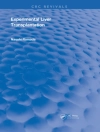Atlas of Neurosurgical Techniques: Spine and Peripheral Nerves
Originally published in 2006, the second edition of this award-winning neurosurgical atlas is written by a notable cadre of world-renowned spine surgeons. Reflecting the enormous depth and breadth of spine surgery, this volume has been completely updated with current, state-of-the-art surgical methodologies and minimally invasive options. Pathologies include degenerative changes, congenital abnormalities, rheumatic diseases, tumors, and trauma.
The authors have divided the book into six consistent sections: occipital-cervical, midcervical spine, cervicothoracic junction, thoracic and thoracolumbar spine, lumbar and lumbosacral spine, and peripheral nerve. Within each section, the opening chapters cover comprehensive discussion of pathology, etiology, and differential diagnosis. Succeeding chapters present step-by-step surgical techniques encompassing anterior, anterolateral, posterior, and posterolateral approaches, separately and in sequence. Minimally invasive techniques and peripheral nerve procedures, including the brachial plexus, lumbosacral plexus, and individual nerves are covered independently, following the same organization.
Key Highlights:
- Clearly delineated indications, contraindications, advantages, and disadvantages provided for each surgery
- Operations with same opening and closing technique covered just once, thereby minimizing redundancy
- Beautifully illustrated with more than 1, 000 images
- Video compendium created by master surgeons provides up-close guidance on a wide array of surgical procedures
- Ideal for both the busy practitioner seeking review and resident looking for robust study materials
This book is an incomparable learning tool for residents, who will likely read it several times during the course of residency. A precisely edited, didactic atlas, neurosurgeons and orthopaedic surgeons will also find it an invaluable resource.
Daftar Isi
Section I Occipital-Cervical Junction
A. Pathology
1 Abnormalities of the Craniovertebral Junction
2 Rheumatologic and Degenerative Disease of the Craniovertebral Junction
3 Tumors of the Occipital-Cervical Junction
4 Trauma of the Occipital-Cervical Junction
B. Anterior Approach
5 Transoral Approaches to the Craniovertebral Junction
6 Transoral Odontoidectomy
7 Extended Transoral Approaches
8 Transoral Closure
9 Minimally Invasive Endoscopic Approaches to the Upper Cervical Spine
10 Extended Maxillotomy Approach for High Clinical Pathology
C. Anterolateral Approach
11 Retropharyngeal Approach to the Occipital-Cervical Junction, Part 1
12 Retropharyngeal Approach to the Occipital-Cervical Junction, Part 2
D. Posterior Approach
13 Posterior Suboccipital and Upper Cervical Exposure of the Occipital Cervical Junction
14 Suboccipital Craniectomy and Cervical Laminectomy for Chiari Malformation
15 Occipital-Cervical Encephalocele: Surgical Treatment
16 Occipital Plating and Occipital-Cervical Fusion
17 Exposure of C1 and C2
18 Atlantoaxial Wiring and Arthrodesis
19 C1-C2 Transarticular Fixation Technique
20 C1 Lateral Mass–C2 Pars, Pedicle, and Translaminar Fixation Techniques
21 Odontoid Screw Placement
Section II Midcervical Spine
A. Pathology
22 Congenital Osseous Anomalies of the Mid- to Lower Cervical Spine
23 Cervical Spine Degenerative Disease and Cervical Stenosis
24 Intramedullary Tumors of the Spinal Cord
25 Extramedullary Tumors of the Spinal Cord
26 Vertebral Bone Tumors
27 Trauma of the Mid- and Lower Cervical Spine
B. Anterior Approach
28 Cervical Spine: Anterior Approach, Diskectomy, and Corpectomy
29 Cervical Arthroplasty
30 Transcorporeal Tunnel Approach for Unilateral Cervical Radiculopathy
C. Posterior Approach
31 Cervical Spine: Posterior Exposure
32 Cervical Laminectomy
33 Posterior Cervical Foraminotomy and Diskectomy
34 Minimally Invasive Posterior Cervical, Diskectomy, Laminectomy, and Foraminotomy for Stenosis
35 Cervical Laminoplasty
36 Gardner-Wells Tong or Crown-Halo Reduction for Cervical Facet Dislocations
37 Posterior Approach for the Treatment of Locked Cervical Facets
38 Subaxial Cervical Lateral Mass Screw Fixation
39 Subaxial Cervical Pedicle Screw Fixation
40 C7 Pedicle Subtraction Osteotomy
D. Combined Anterior-Posterior Approach
41 Combined Anterior-Posterior Approach for Complete Vertebral Resection in the Midcervical Spine
Section III Cervicothoracic Junction
A. Anterior Approach
42 Supraclavicular Approach to the Cervicothoracic Junction
43 Transmanubrial-Transclavicular and Transsternal Approach to the Cervicothoracic Junction
44 Cervicothoracic Corpectomy
45 Anterior Reconstruction Following Cervicothoracic Corpectomy
B. Posterior Approach
46 Posterior Cervicothoracic Instrumentation and Fusion
Section IV Thoracic and Thoracolumbar Spine
A. Pathology
47 Congenital Abnormalities of the Thoracic and Thoracolumbar Spine
48 Disk Disease of the Thoracic and Thoracolumbar Spine
49 Tumors of the Thoracolumbar Spine
50 Trauma of the Thoracic and Thoracolumbar Spine
51 Thoracic Epidural Abscess and Osteomyelitis
52 Vascular Malformations of the Spine
B. Antero/Anterolateral Approach
53 Open Lateral Transthoracic Approach
54 Open Lateral Transthoracic Diskectomy and Vertebrectomy
55 Endoscopic Lateral Transthoracic Approach
56 Endoscopic Thoracic Sympathectomy
57 Endoscopic Lateral Transthoracic Diskectomy and Vertebrectomy
58 Lateral Transthoracic and Retropleural MIS Approaches
59 Lateral Transthoracic MIS Diskectomy and Vertebrectomy
60 Lateral Graft and Plate Reconstruction
61 Open Thoracoabdominal Approach
62 MIS Thoracoabdominal Approach
63 Open Retroperitoneal Approach
64 Minimally Invasive Retroperitoneal Lateral Lumbar Interbody Fusion
65 Minimally Invasive Retroperitoneal Vertebrectomy
66 Thoracoabdominal/Retroperitoneal Graft and Lateral Plating
C. Posterolateral Approach
67 Open Costotransversectomy
68 MIS Costotransversectomy
D. Posterior Approach
69 Thoracic Laminectomy
70 Thoracic Laminoplasty
71 Transpedicular Thoracic Diskectomy
72 Intradural Extramedullary Tumor Resection
73 Intramedullary Tumor Resection
74 Open Anterolateral Cordotomy
75 Commissural Myelotomy
76 Thoracic DREZ Operation
77 Caudalis DREZ
78 Shunt Placement for Syringomyelia
79 Posterior Approach and In-Situ Fusion of the Thoracic Spine
80 Pedicle Screw Instrumentation of the Thoracic Spine
81 Open Scoliosis Correction
82 Minimally Invasive Correction of Spinal Deformity
83 Minimally Invasive Thoracic Decompression for Multilevel Thoracic Pathology
Section V Lumbar and Lumbosacral Spine
A. Pathology
84 Spondylolysis and Spondylolisthesis in Children
85 Lumbar Degenerative Disk Disease
86 Tumors of the Lumbosacral Spine
87 Trauma of the Lumbar Spine and Sacrum
B. Anterior Approach
88 Anterior Approach to the Lumbosacral Junction
C. Anterolateral Approach
89 Anterolateral Retroperitoneal Approach to the Lumbosacral Spine
D. Posterior Approach
90 Open Posterior Lumbar Approach
91 Open Posterior Lumbar Foraminotomy
92 Open Posterior Lumbar Hemilaminectomy
93 Open Posterior Lumbar Microdiskectomy
94 Open Posterior Lumbar Laminectomy
95 MIS Posterior Lumbar Approach
96 MIS Posterior Lumbar Foraminotomy
97 MIS Posterior Lumbar Hemilaminectomy
98 MIS Posterior Lumbar Diskectomy
99 MIS Posterior Lumbar Decompression of Stenosis
100 Microdiskectomy for Foraminal or Far Lateral Disc Herniations
101 Far Lateral MIS Diskectomy
102 Transverse Process Fusion
103 Open Placement of Pedicle Screws: Lumbar, Sacral, and Iliac Screws
104 Minimally Invasive Transforaminal Lumbar Interbody Fusion
105 MIS Placement of Pedicle Screws: Lumbar, Sacral, and Iliac Wing Screws
106 Lumbar Osteotomies
107 Cortical Trajectory Screws
108 MIS Facet Screw
109 Transacral Approach
110 Repair of Cerebrospinal Fluid Leaks
111 Lumboperitoneal Shunt
112 Dorsal Rhizotomy of the Lumbosacral Nerve Roots for the Treatment of Spastic Diplegia in Cerebral Palsy Patients
113 Resection of Cauda Equina Ependymomas
114 Release of the Tethered Spinal Cord
115 MIS Release of the Tethered Spinal Cord
116 Implantation of Spinal Cord Stimulators
117 Placement of an Intrathecal Drug Delivery System
118 Vertebroplasty and Kyphoplasty
119 Resection of Lumbosacral Lipomas
120 Repair of Myelomeningoceles
121 Excision of Spinal Congenital Dermal Tract/Dermoid
122 Resection of Sacrococcygeal Teratoma
123 Surgical Management of Spinal Dysraphism
124 Repair of Diastematomyelia
125 Sacral Agenesis
126 Iliac Crest Bone Grafting
Section VI Peripheral Nerves
A. Pathology of the Brachial Plexus
127 Neoplasms of Peripheral Nerves
128 Traumatic Peripheral Nerve Injuries
129 Compressive Lesions of the Peripheral Nerve
B. Surgery of the Brachial Plexus
130 Supraclavicular Approach to Brachial Plexus Surgery
131 Infraclavicular Approach to Brachial Plexus Surgery
132 Surgical Approach to the Spinal Accessory Nerve
133 Surgical Approach to the Axillary Nerve
134 Surgical Treatment of the Musculocutaneous Nerve
135 Open and Endoscopic Decompression of the Median Nerve
136 Decompression of the Ulnar and Radial Nerve
C. Pathology of the Lumbosacral Plexus
137 Trauma to the Lumbosacral Plexus
138 Tumors of the Lumbosacral Plexus
D. Surgery of the Lumbosacral Plexus
139 Approach to the Nerves of the Lower Extremity
140 Exposure and Biopsy of the Sural Nerve
141 Approach to the Lumbosacral Plexus
E. Other Nerves
142 The Intercostal Nerves
143 Surgical Treatment of Ilioinguinal Neuralgia
144 Surgical Treatment of Genitofemoral Neuralgia
145 Lateral Femoral Cutaneous Nerve
146 Peripheral Nerve Grafting and Harvesting Techniques
147 Superficial Peroneal Nerve Biopsy












